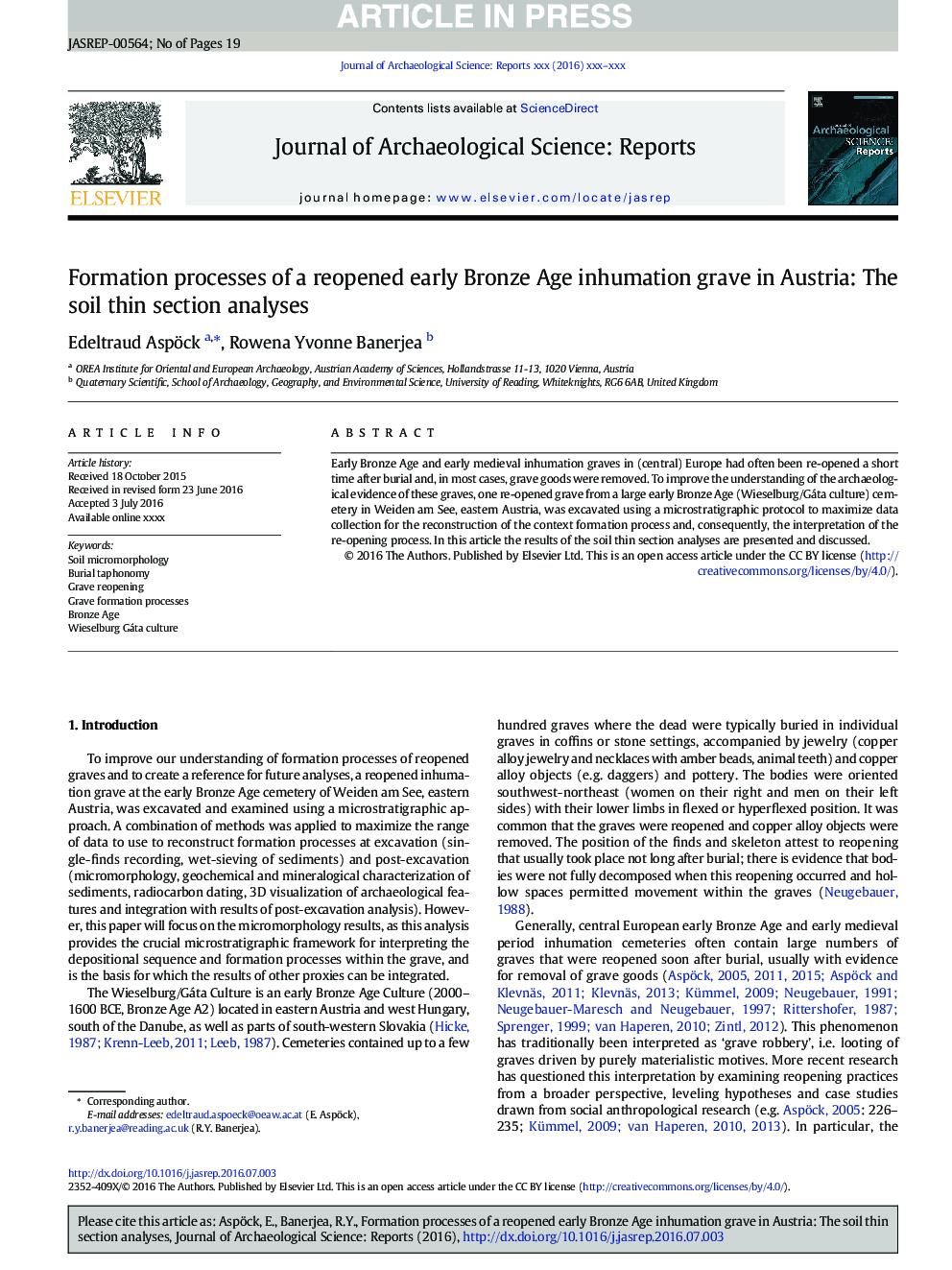| Article ID | Journal | Published Year | Pages | File Type |
|---|---|---|---|---|
| 5112205 | Journal of Archaeological Science: Reports | 2016 | 19 Pages |
Abstract
Early Bronze Age and early medieval inhumation graves in (central) Europe had often been re-opened a short time after burial and, in most cases, grave goods were removed. To improve the understanding of the archaeological evidence of these graves, one re-opened grave from a large early Bronze Age (Wieselburg/Gáta culture) cemetery in Weiden am See, eastern Austria, was excavated using a microstratigraphic protocol to maximize data collection for the reconstruction of the context formation process and, consequently, the interpretation of the re-opening process. In this article the results of the soil thin section analyses are presented and discussed.
Keywords
Related Topics
Social Sciences and Humanities
Arts and Humanities
History
Authors
Edeltraud Aspöck, Rowena Yvonne Banerjea,
